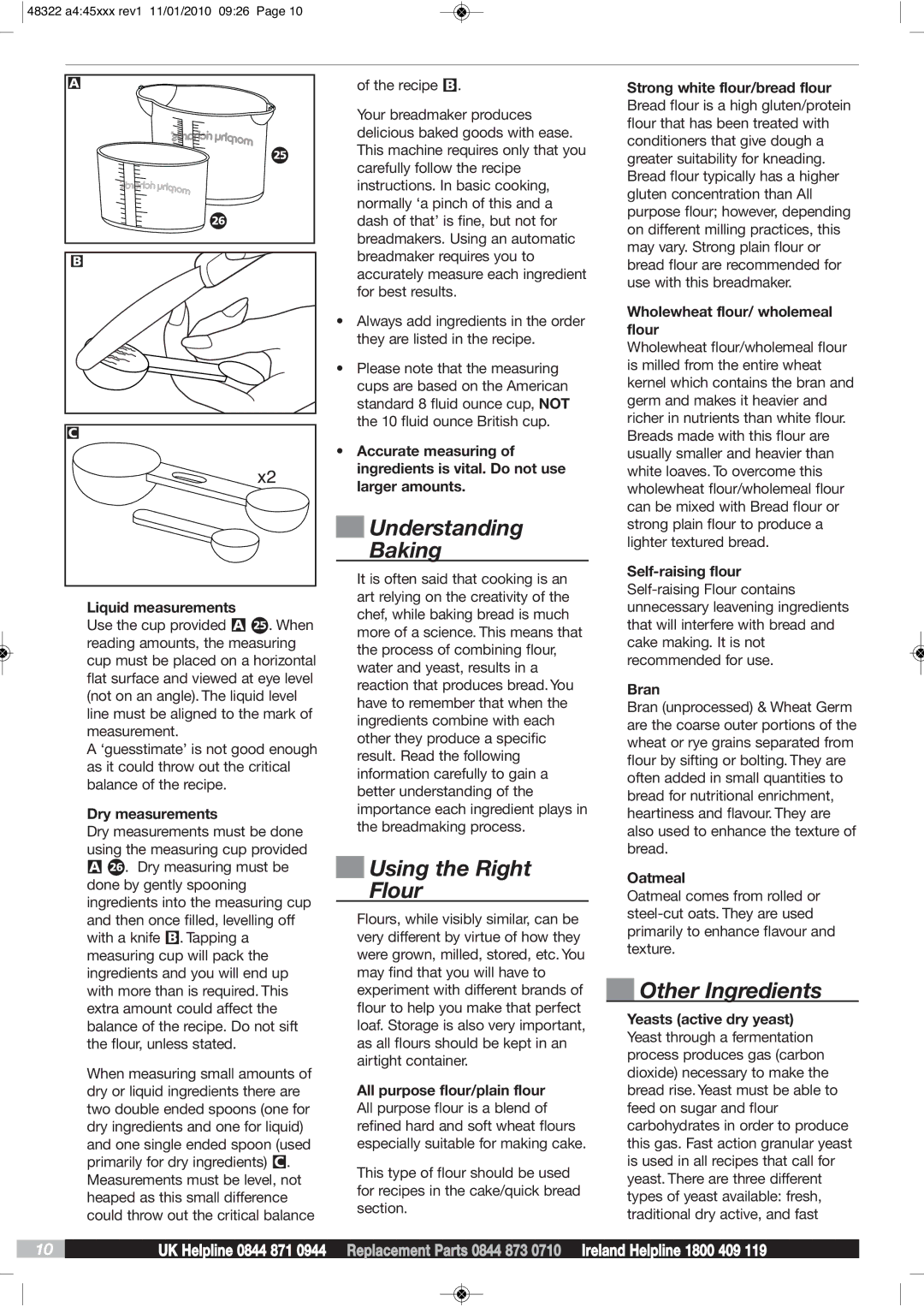BM48322 specifications
The Morphy Richards BM48322 is an exceptional bread maker designed for those who appreciate the art of home baking. This appliance combines innovative technology with user-friendly features to produce a wide variety of delicious breads and baked goods.One of the standout characteristics of the BM48322 is its versatile baking options. With multiple settings, it allows users to choose from different loaf sizes and crust colors, catering to individual preferences. Whether you crave a light, golden crust or a darker, more robust finish, this machine has you covered. The programmable timer is another notable feature, enabling users to set their bread maker in advance, so freshly baked bread is ready when you need it, perfect for busy households.
The BM48322 boasts a user-friendly digital display with an intuitive interface, making the selection of baking modes straightforward. With a maximum capacity of 2 pounds, it is ideal for families or gatherings. Additionally, the machine includes a variety of pre-set programs for different styles of bread, including gluten-free and wholemeal options, expanding the possibilities for health-conscious bakers.
Another impressive technology in the Morphy Richards BM48322 is the machine's automatic fruit and nut dispenser. This innovative feature allows for the perfect addition of mix-ins without interrupting the baking cycle, ensuring that ingredients are evenly distributed throughout the bread.
Not only does the BM48322 excel in functionality, but it is also designed with user convenience in mind. The non-stick baking pan and kneading blade are easy to clean, making maintenance a breeze. The safety features, including a cool-touch exterior and automatic shut-off, provide peace of mind during operation.
In addition, the Morphy Richards BM48322's sleek design and compact footprint make it a stylish addition to any kitchen. Available in a neutral color scheme, it complements various kitchen aesthetics while taking up minimal counter space.
In conclusion, the Morphy Richards BM48322 is a standout bread maker that excels in versatility, convenience, and design. Its impressive features combine to produce high-quality bread effortlessly, making it an essential tool for both novice and experienced bakers alike. With this machine, anyone can enjoy the comfort and satisfaction of homemade bread, elevating everyday meals and special occasions.

 Û
Û